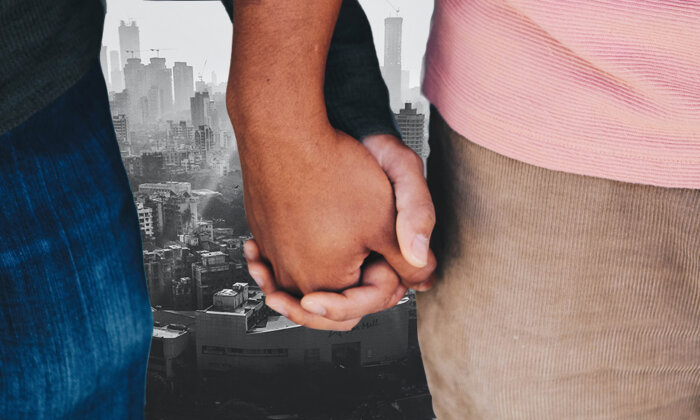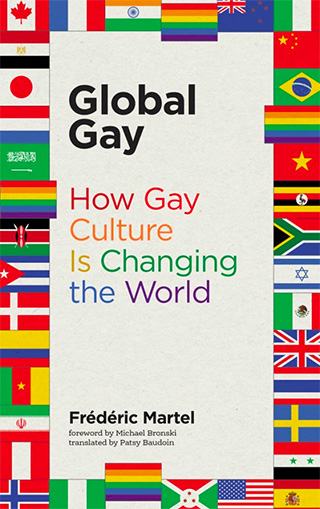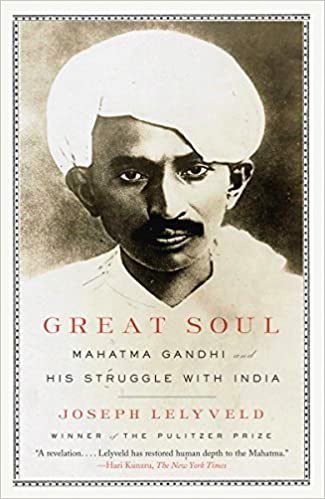The Slow Evolution of Gay Culture in India

I am at the Marriott on Beach in Mumbai, India. Bobby, a gaybombay.org activist (I know only his first name), has invited me to a gay soirée in one of the private clubs: the basement of a huge palace. It is almost midnight, and I find myself in the sort of extravagant and grandiose party Indians specialize in. India is not a “cool” country; it is a “hot” country (as the writer Salman Rushdie puts it). Young women are wrapped in improbable dresses with large multicolored scarves; young men wear turbans or chic HSBC bank officer’s suits. There are huge cakes with whipped cream, served at will, and everyone seems to flirt and kiss each other. The proportion of gays seems significant, but the place is mixed, open, always discreet, and codes are respected, for good measure. “Here it is not a soirée, it’s a partyyyy” Bandana Tewari tells me, emphasizing the y. She is the flamboyant head of the fashion pages of Vogue India. Visibly happy, she adds: “This festival is a concentrate of everything Indians love: glamour, celebrities, fashion, emotion, unreality. Who sleeps with whom? Who is the villain? Who will be deified? Who will become a nabob? We won’t go into details! No matter anyone’s sexuality, what counts is one’s appearance, one’s attitude. My job is to observe this kind of party and to ‘voguify’ it.”

Between two hugs and a few good laughs, Bobby asks me what I think of the party. “You’re not in Mumbai here; you are in MumGay,” he says, parodying the title of a short Indian gay film, “BomGay,” which generated some buzz at the time of its release in 1996. Later in the evening, Bobby explains that in India homosexuality is characterized, as it often is in Asia, by the classical trinity: criminalization, social disapproval, and the police’s nonenforcement of the law. He adds: “For a long time, the government would not decriminalize homosexuality for the sake of ‘containment,’ but it didn’t want to authorize it for fear of making it a public issue. In short, we did what we wanted.”
The idea of “containment” — an American diplomatic term referring to the limitation of the Communist contagion — is quite a relative notion in a country whose National AIDS Control Organization informally estimates has at least 70 million gays.
In India, as often in Asia, the issue is not just about the law: a whole culture helps make homosexuality taboo.
And yet things evolve. In June 2008, Gay Pride gathered a few thousand people in the Indian capital, an event that is well covered by the national press. The following year the Supreme Court of New Delhi decriminalized homosexuality and repealed Section 377 of the penal code, which it ruled unconstitutional. It was the first time such a court intervened on the sensitive issue of gay rights. “This article [Section 377] was very rarely used in India, but it was a sword of Damocles hanging over our heads, and it contributed to the nonrecognition of homosexuals in India,” explains Rajeev, a gay activist from the Naz Foundation Trust, an organization that fought for the decriminalization of homosexuality and was supported by many Bollywood writers and actors as well as by Amartya Sen, Nobel Prize winner in economics, and by the famous Manvendra Singh Gohil, the only royal prince to be openly gay. The repeal was, however, severely criticized by many religious leaders, including Islamists, who denounced a “dangerous move that will contribute to importing Western culture into India and corrupting young Indians.”
Under pressure from the religious lobbies that appealed, the Supreme Court reversed its decision in December 2013 and thus recriminalized homosexuality. The decision dismayed Shashi Tharoor, a former Indian minister of foreign affairs and MP. When I met him in 2015 in his prestigious New Delhi office, he confirmed that he would “file a new bill on behalf of the Left [the Congress Party] to reverse the decision of the Court and finally decriminalize homosexuality in India once and for all.” He did file a new bill in December 2015 but lost the vote, seventy-one to twenty-four. The Court then decided to review the case but in a new decision on June 29, 2016, upheld the criminalization of homosexuality.
Jaya Jaitly, a figure in the Indian Democratic Socialist Party, also fights for the rights of LGBT people, which, she says, “must be obtained in India at any cost.” This great secular lady, like many of my interlocutors in New Delhi, criticizes the ruling party of the Right that is currently in power — Prime Minister Narendra Modi’s Indian People’s Party — for having renewed ties with an “archaic and anachronistic” Hindu nationalism that she unhesitatingly characterizes as sexist, homophobic, and antifeminist. Amit Khana, a leading Bollywood film producer (he also penned the lyrics of many songs in these typically Indian films), offers a bit of nuance regarding the prime minister’s policy slip. “I never defended Modi earlier because of his chauvinism, but he has evolved. On the economic front, I now support him, and I think he is the guarantor of a pluralist India,” Khana tells me during an interview at the Grand Hotel Hyatt Regency bar. Being a gay-friendly figure, this Bollywood producer nevertheless believes that India needs to evolve on the gay issue.
In India, as often in Asia, the issue is not just about the law: a whole culture helps make homosexuality taboo. Societal values, the caste system, arranged marriages, the high probability of being disinherited for coming out — everything runs counter to gay liberation. And when you mess with the life of Gandhi, the founding father of India, then reactions get even irrational.
Joseph Lelyveld learned this lesson the hard way. This Pulitzer Prize–winning American journalist published “Great Soul,” a biography of Gandhi, in 2011. The book caused a great stir because it raised the possible bisexuality of the father of modern India. According to Lelyveld, during the 21 years Gandhi lived in South Africa, he was in love with Hermann Kallenbach, a German Jewish architect and sexy bodybuilder to boot. To make his case, the journalist quoted only short excerpts from a series of unpublished letters. To verify these facts, I went to the sources at the Gandhi and Kallenbach house in South Africa, where I was able to read their entire correspondence — hundreds of handwritten and typed pages.
According to Lelyveld, during the 21 years Gandhi lived in South Africa, he was in love with Hermann Kallenbach, a German Jewish architect and sexy bodybuilder to boot.
The Satyagraha House is now a guesthouse at 15 Pines Street in a northern neighborhood of Johannesburg. If you like vegetarian cuisine, you can book a spartan room. (I spent a week in the “Kallenbach cottage,” its thatched roof supported by timber columns.) Having arrived there as a young Indian lawyer dressed in Western clothes, a more mature Gandhi would leave South Africa wearing a simple white dhoti: in the meantime he threw himself into the struggle for Indians exiled in Africa, refined his concept of social justice and anticolonialism, and established his principles of nonviolence. He met Kallenbach in 1904. They very quickly forged an uncommon intellectual and emotional relationship.

“Their relationship was clearly very intimate. There was an undeniable level of intimacy. At the same time, Gandhi … made a vow of chastity. It is difficult to talk about a physical relationship. Kallenbach was beautiful and very likely homosexual. He was always single. It was not just a friendship: there was clearly an emotional contract between them,” Lauren Segal, the curator of the Gandhi Museum in Johannesburg, explains carefully. In any case, Gandhi and Kallenbach decided to move in together (at least from 1908 to 1914) and to forego a conventional family life. The writings between the two men, as they appeared in Gandhi’s many letters, are surprising: love is present, explicitly; a dominating/dominated relationship emerges, even in the nicknames the two men call each other; there’s talk of Vaseline; and Gandhi tells Kallenbach how Kallenbach “took complete possession of [his/Gandhi’s] body.” The two men took an oath of love, a love whose nature “the world has never known.” And when they were finally separated because Kallenbach did not obtain permits to join him in India, Gandhi wrote to him saying that he dreamed of him. “These letters are very emotional. There is clearly an attraction between these two men,” Eric Itzkin, the biographer of Gandhi’s South African years, tells me when I interview him in Johannesburg.
In an original memo cosigned by Gandhi and Kallenbach that I uncover, stunned, in the Satyagraha House archives, they agreed that Kallenbach should neither “marry during [Gandhi’s] absence” nor “look at women lustfully.” Finally, as I contemplate pictures of a young, angelic, effeminate, and friendly Gandhi when he lived with his friend in South Africa, doubts set in.
What kind of couple were Gandhi and Kallenbach? Was Gandhi bisexual? It is hard to say. The biographer does not settle the question. Other experts interviewed suggested that the two men’s relationship was more homoerotic than homosexual. Montaigne and La Boétie come to mind, and the two friendships are similar in their intellectual depth and emotional intensity. But to go further and to speak of a homosexual identity or even of practices would be, as Marguerite Yourcenar so beautifully puts it, “to solicit facts.”
Still, the case did not go unnoticed in India in the spring of 2011. Lelyveld’s biography, which is serious and which remains cautious on the subject, prompted comments that were all the more outrageous because they were made before the novel had been read. It has been banned in several Indian states, including Gujarat, where Gandhi was born. “The book is inherently depraved,” the prime minister of this Indian region claimed. And as far as the Indian minister of justice was concerned, “This book denigrates national pride, which cannot be tolerated.”
“India is not the U.S., not even Thailand, the Philippines, Taiwan, or Hong Kong. Not even Singapore. We are far from being a gay-friendly country. We are just at the beginning of a long road.”
But the Gandhi family criticized this censorship, and Tushar Gandhi, Gandhi’s great-grandson, has defended the book. Finally, India’s LGBT organizations had interesting reactions. Several activists welcomed the discovery in their blogs, even wondering whether the Gandhi icon could serve their cause by becoming a model of gay tolerance.
With or without a gay icon, today India is moving forward. “Things are beginning to change slowly,” explains Rajeev, who reveres Gandhi and does advocacy work with the Naz Foundation Trust. “There are now Gay Pride celebrations in some major cities,” Rajeev continues; “there are ‘pink nights’ in nightclubs, a Queer Ink gay bookstore here in Mumbai, and Bollywood stars who sometimes perform gay characters.” In New Delhi, I notice that there are now some gay bars, such as Boyzone Delhi, the Pegs N Pints, and Kuki. Organizations defending gay rights, such as the Naz Foundation, are even authorized by the government, which isn’t possible in China, Vietnam, or Singapore.
At the root of these developments, you first find demographics. With more than 370 million people younger than fifteen years of age (almost one-third of the population), India is a young country. “Teenagers are changing. They are more and more educated; they have access to the internet everywhere; they have a cell phone; they watch MTV; and they travel more to the United States: we must change with them,” Ritesh Sidhwani explains. Thirty-five years old and of Pakistani origin, Sidhwani is the young owner of Excel Entertainment, which produces new “rock” and “urban” films for Bollywood. Interviewed in his office in the Santa Cruz neighborhood of central Mumbai, Sidhwani thinks that this “new youth culture will profoundly transform India.”
A few days later, at the Citywalk shopping mall in Saket, south of New Delhi, I meet Navin, who works in a multiplex of the PVR Cinemas group. Discreet, attractive, Navin is also part of gaybombay.org, but he seems less optimistic than some of the others I’ve spoken with. He has not forgotten the release of films such as “Fire” and, later, “The Girlfriend,” both of which brought two lesbians to the screen: “There have been violent protests by the Hindu radical Right. Cinemas have been ransacked, and even here all the movie posters were vandalized.” He adds: “India is not the U.S., not even Thailand, the Philippines, Taiwan, or Hong Kong. Not even Singapore. We are far from being a gay-friendly country. We are just at the beginning of a long road.”
Frédéric Martel, a researcher at Sciences-Po Paris and ZHdK Zurich, is the host and producer of the French radio show Soft Power, and foreign affairs columnist at Slate.fr. He is the author of nine books, including “Global Gay,” from which this article is excerpted.

